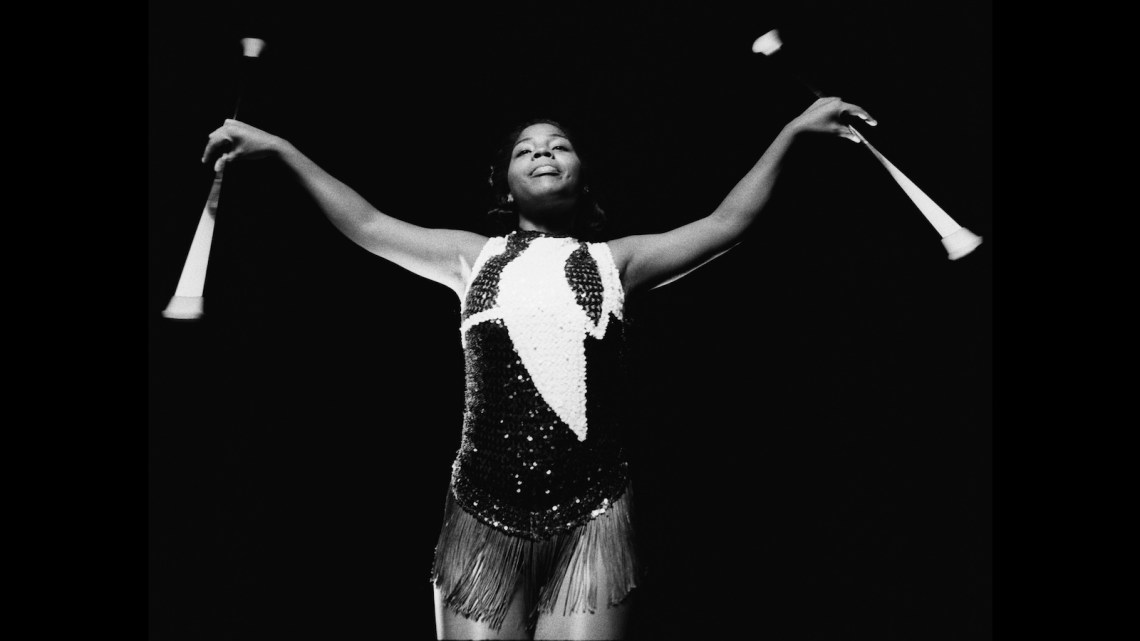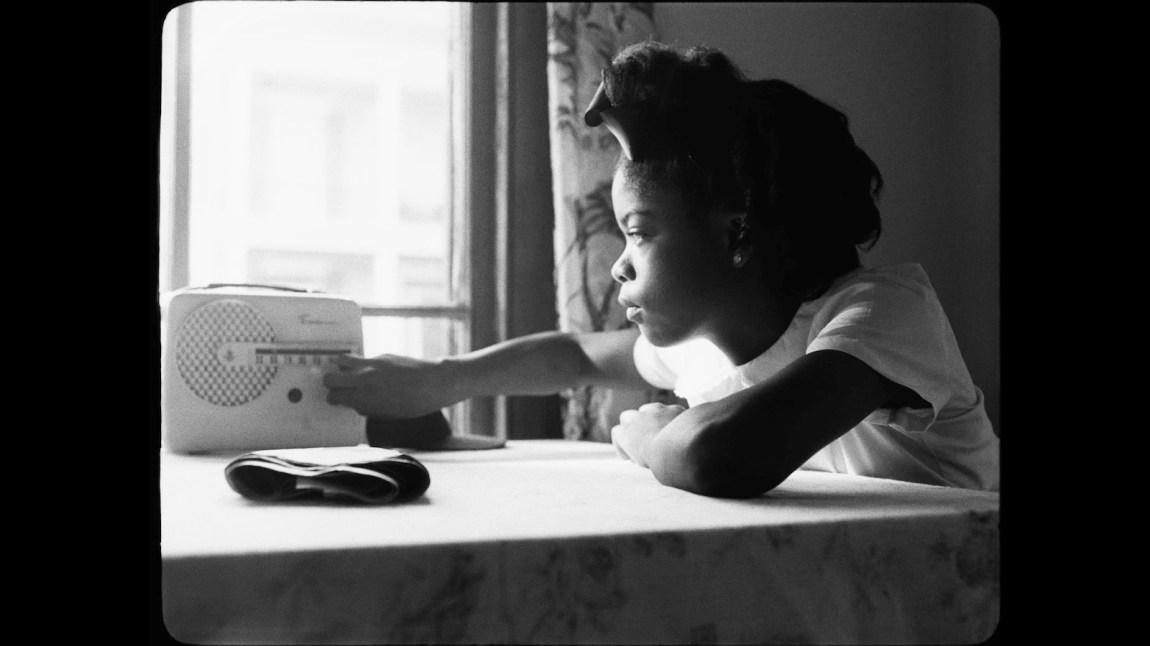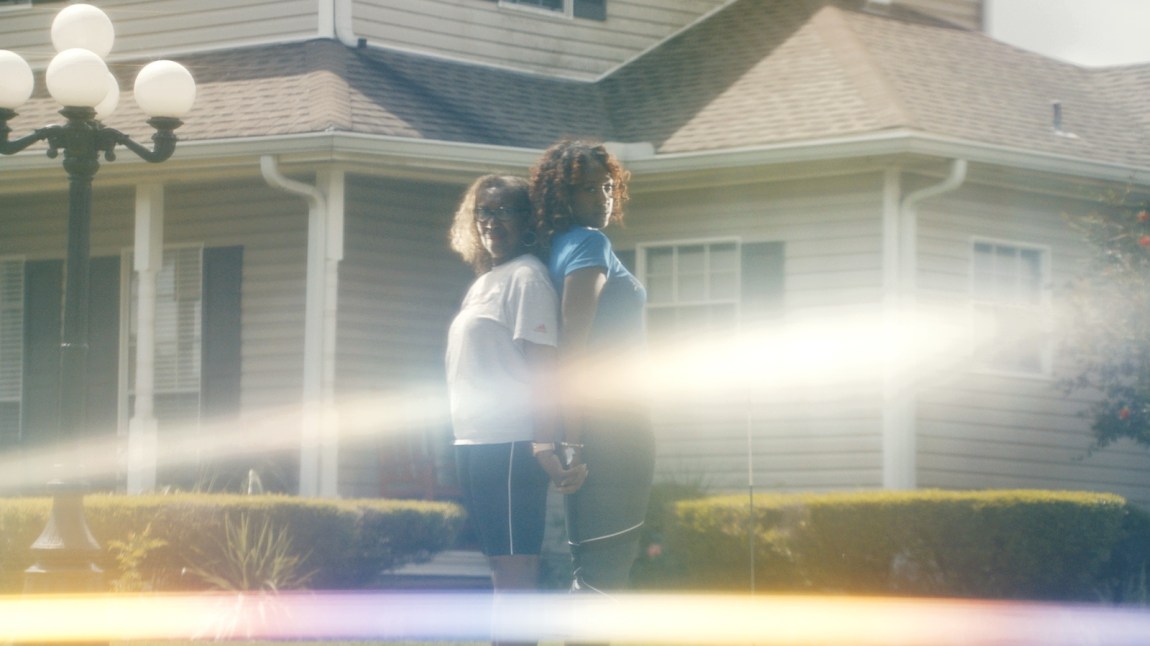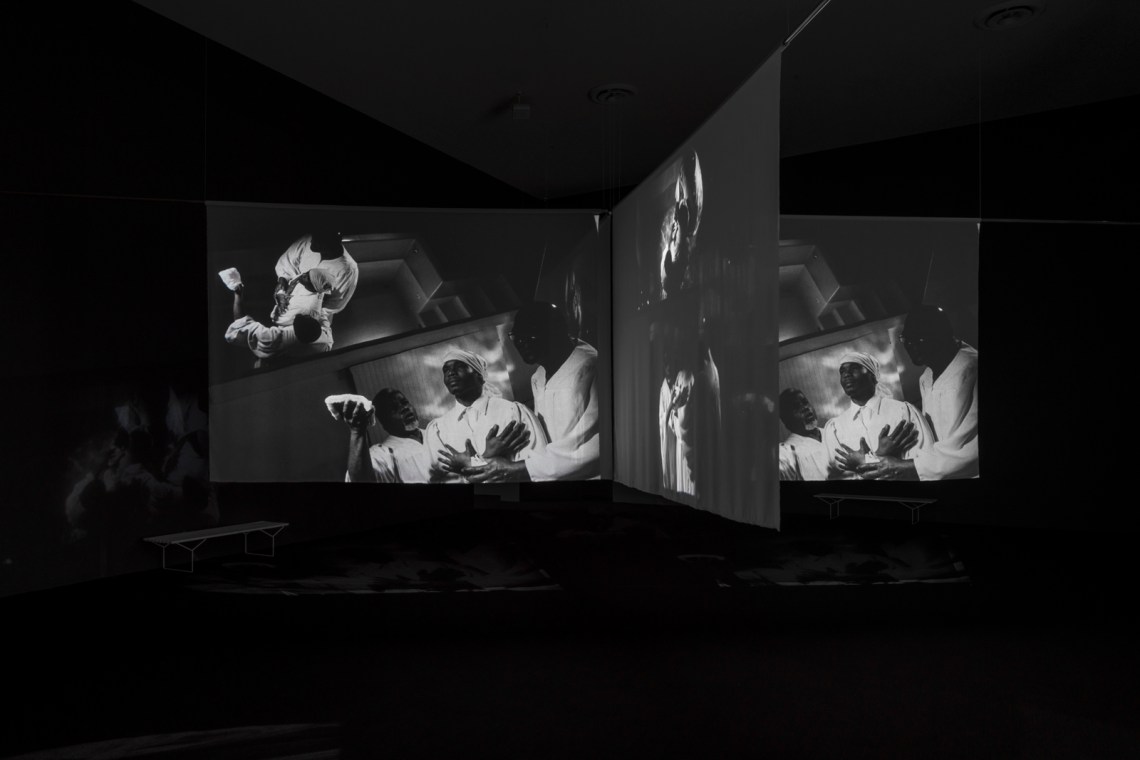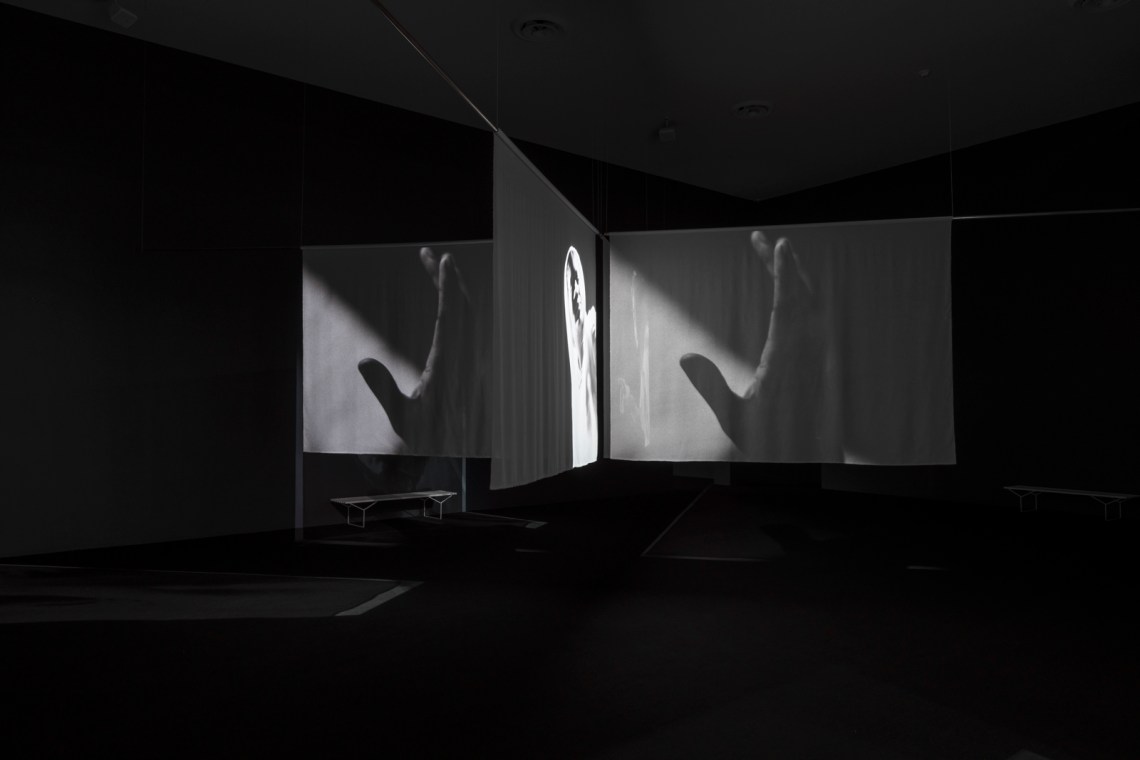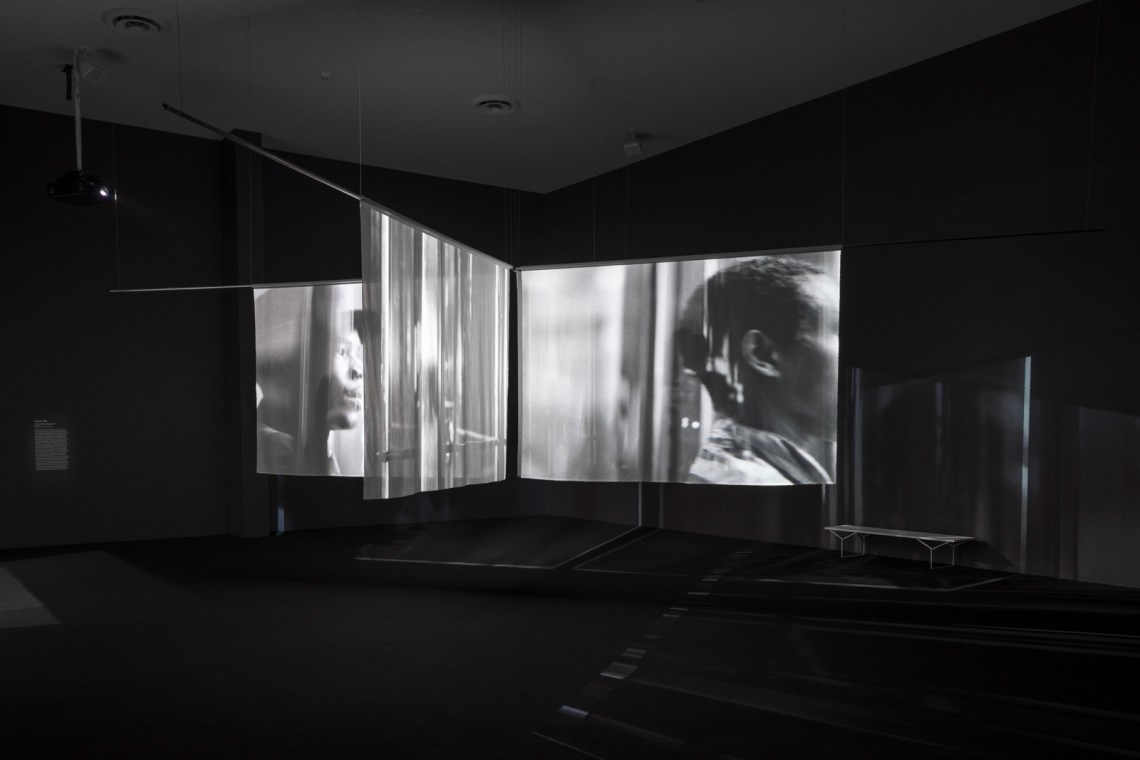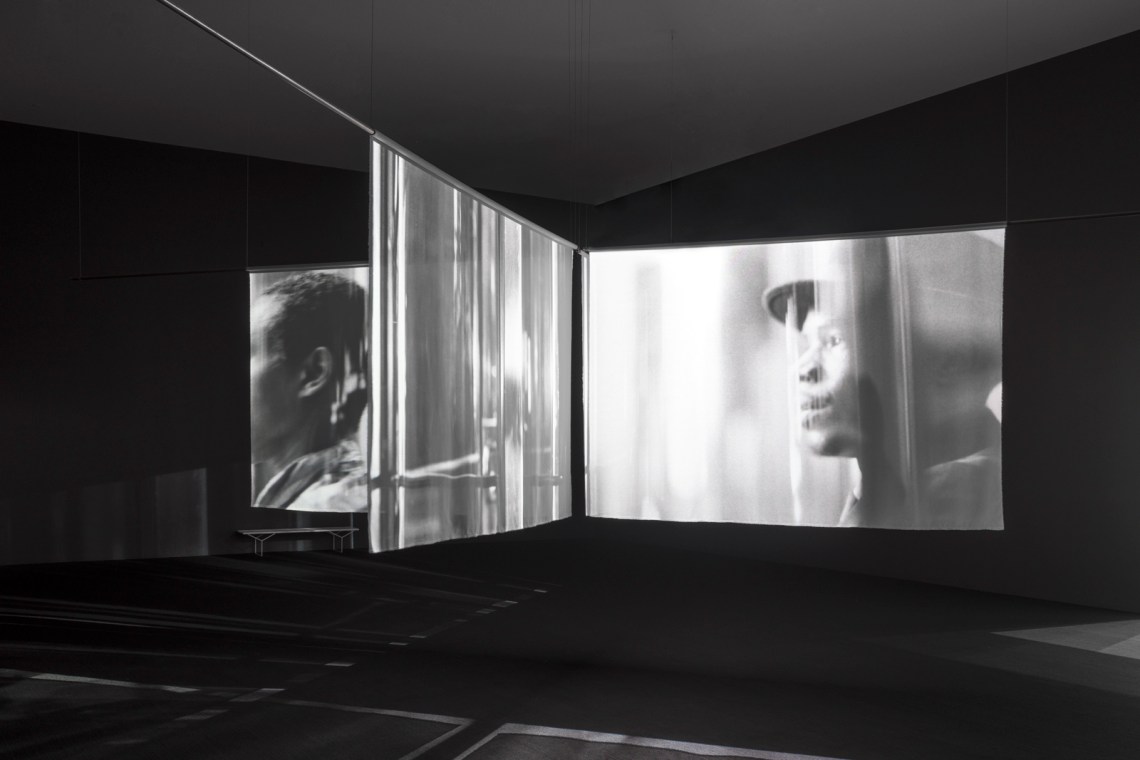Cultural relics, once lost, are generally assumed to be lost forever, which is perhaps why they are so often said to be lost “to time”—as if the objects themselves had come face-to-face with eternity and chosen to dissipate. For those of us whose ancestral totems are conspicuously missing from the public archives that are meant to preserve collective history, nothing, we are told, can be done. Never mind if those totems have been stolen, or purposefully misclassified, or turned into collectors’ items and sold for profit. The best we can do is use our imaginations—reinvent the archive, or remix it, or dream a new one into existence.
Speculation, reversed chronology, counternarratives, assembly, disassembly, reassembly: the tools available to black artists, and especially experimental black artists, are said to arise from a fundamental lack, which is why it can feel so disorienting when the institutions that house public records declare that they have made an internal discovery. This past fall, nine years after releasing a report detailing the paltry survival rate of silent films in general and productions by black filmmakers in particular, the Library of Congress announced that scholars had identified the earliest known footage produced by a black film company, a fifteen-second sequence from The Trooper of Troop K (1916), embedded in a copy of a different film from the archive’s holdings. The clip, it said in a tweet, was discovered, “hiding in plain sight, in our collections.”
Eight years before the resurrection of The Trooper of Troop K the Library designated the oldest known feature with an all-black cast, Lime Kiln Club Field Day (1913), for preservation and induction into the National Film Registry. The film, shot in the Bronx, follows the antics of a young man who enlists in a series of field day competitions, from watermelon-eating to pig-wrestling, to win the affection of the town’s local beauty. It was never finished—according to the Museum of Modern Art, whose curators reconstructed the footage, its white producers “packed the footage away in unmarked cans, leaving no written record of its existence.” After the movie’s restoration, the filmmaker Garrett Bradley drew inspiration from its spliced remains and in 2019 released America, a series of twelve vignettes stitched together from Lime Kiln Club Field Day and contemporary scenes that Bradley shot herself.
The vignettes are enigmatic, lush, warped. A young woman finds a white man draped in white cloth and wrestles it away; it floats somewhere, elsewhere, where a gaggle of black children chase it, animated with delight. The cloth becomes a motif: it hangs on a laundry line, gets trampled by horses, and then reappears in a new form, as church robes worn by the attendees of a black Last Supper. Bradley makes no attempt to render the archival and contemporary scenes indistinguishable. The former are static, if joyous: even when they move, they have the quality of images frozen in time. But in sequence with the pristine, high-contrast, slow-motion contemporary shots, they take on the quality of a memory with unclear origins: did I experience it, or see it in a dream?
Since the release of America, Bradley has joined the ranks of the archivist-artists, figures whose mission is often said by critics and curators to be a corrective to the archive’s irredeemable deficiencies. The narratives that make up history have obvious limitations: they leave people out. Art, on the other hand, is believed by practically everyone, except for those who actually make it, to be boundless. And so creative people are tasked with doing what the entrenched institutions that narrate and preserve history supposedly cannot: facilitate redress.
Bradley’s work undercuts that expectation. In Time (2020), her revelatory, Oscar-nominated debut feature, mining the archive is less a matter of historical restitution—of filling in what might otherwise be forgotten—than an intimate reconfiguration of the present. Fox Rich, an entrepreneur, activist, and mother, is in the midst of a byzantine effort to free her husband from a sixty-year prison sentence; the film, which uses Rich’s home video footage and Bradley’s own documentary work in equal measure, is a portrait of the endurance of the couple’s love and how it binds their family together. Love “exceeds all space and time, so when we started looking at the archive we were thinking about it strictly in those terms,” Bradley told Variety. “That is what allowed us to go in and out of the past and the present, it allowed us to editorially and structurally have the narrative move forward while also going backwards at the same time.”
America, Bradley’s most robust and literal work of archive-artistry, is the gateway to American Rhapsody, her surreal and often arresting solo exhibition at the Museum of Contemporary Art, Los Angeles. The film is projected in the first of three rooms, onto four pieces of intersecting white batiste fabric that hang from the ceiling, so that the viewer cannot separate the experience of seeing it from the experience of seeing through it. The other two films that comprise the exhibition are projected more traditionally, onto large, flat, white screens. AKA (2019) is the only color work in the show, and takes the distinction seriously. The camera, positioned in a clear glass elevator, careens up and down; water turns faces into shape-shifting surfaces. In one shot, the sky is boundless and illuminating; in another, it is revealed to be a green screen. In Bradley’s treatment, almost anything can become reflective, a shiny portal. “Are you color-struck?” asks a voice, a question of spellbinding strangeness, even when it gets the ethnographic treatment: the phrase “refers to both interracial and intraracial forms of discrimination based on skin color,” reads the wall text.
Advertisement
Alone (2017), the third and final film in the show, deploys the intimate documentary style for which Bradley became known after the release of Time. Shot in New Orleans in 2016, the short film follows Bradley’s friend Aloné, a young woman whose incarcerated boyfriend, Desmond, has just asked her to marry him. As she goes about her daily life—coordinating payday loans, washing hair, waiting outside the courthouse to catch glimpses of Desmond as he disembarks from the sheriff’s bus to use the bathroom—she wonders what it would be like to marry him, to meet in courtrooms and mediated by lawyers, to reunite only in dreams.
She tries on a wedding dress and decides what kind of bride she wants to be. “How do I see myself?” she asks. “Attractive, beautiful, glamorous, having a happy glow off of me, with a cathedral train, lots of lace, detail, pearls, diamonds everywhere. I want to be able to say: I feel happy. I’m beautiful in this dress. I’m sexy in this dress. I want to be able to smile.” The story she spins is so absorbing that when it is followed, tragically, by a screaming fight with her mother and grandmother, shot from behind a closed door, you feel the violence of being ripped from the glow of recognition and plunged into the harsh reality of logistics. “For what?” asks her grandmother. “Because I love him,” Aloné replies. Her mother becomes her mime. “Because you love him?” she screams, with all the bitter-cold force of so-called rational thought.
It can be difficult to judge the value of seeing video works at a museum when they might be viewed more comfortably at home or more conventionally in a movie theater. But Bradley’s films, even and especially the more traditionally narrative Alone, benefit immensely from the circuitous, stop-and-go nature of exhibition spectatorship, in which any scene can feel like a beginning and none ever feels like an end. Shown on a loop, the couple, whose meetings are otherwise circumscribed by visiting hours, family expectations, court dates, and metal fences, goes on and on. Desmond might have just proposed, and the warden might never deny their request for a ceremony, just as the archival footage that punctuates America might never be designated lost, or resurrected, but simply made continuous.


